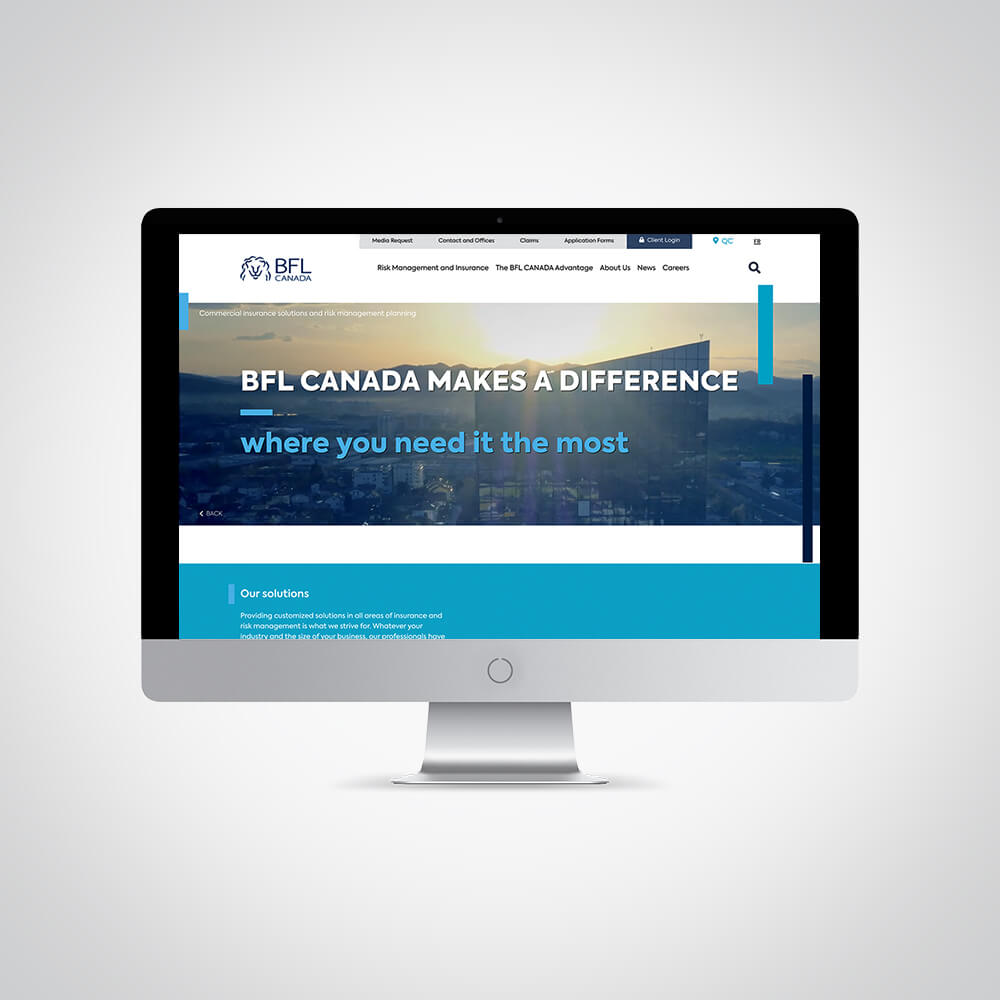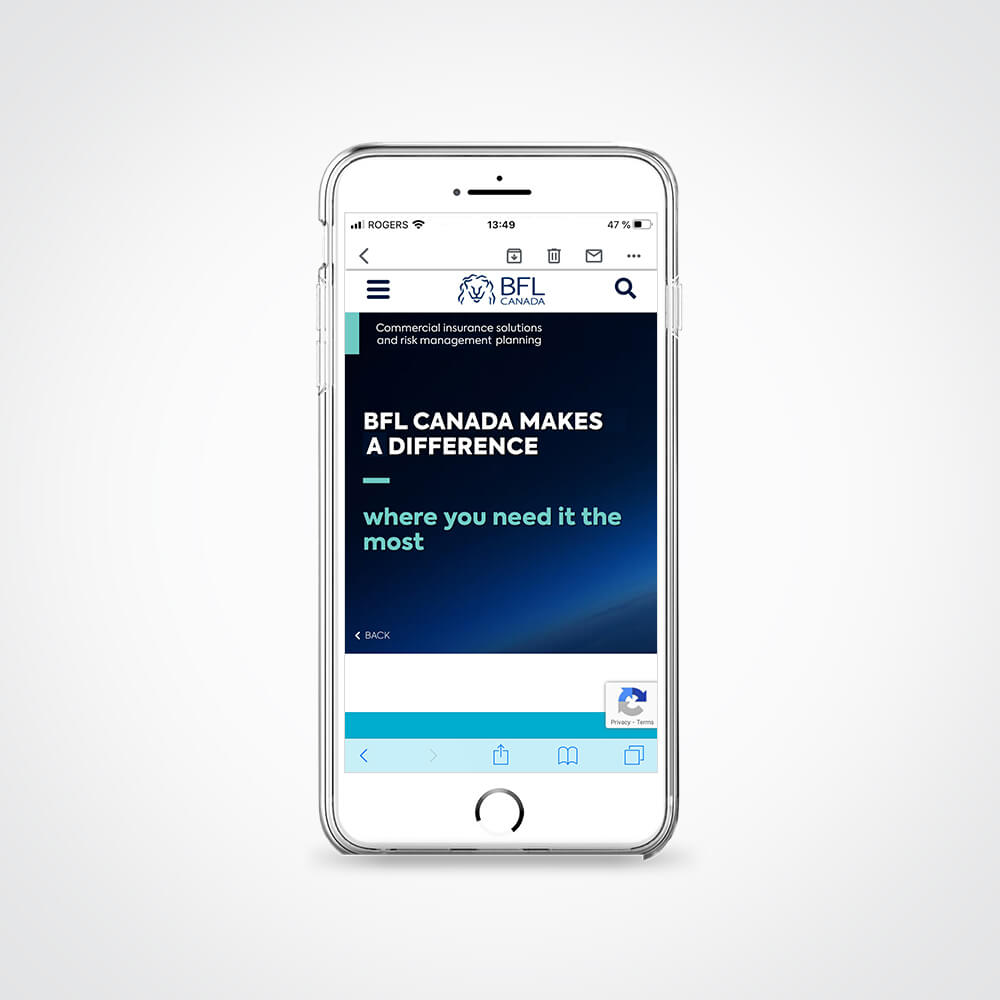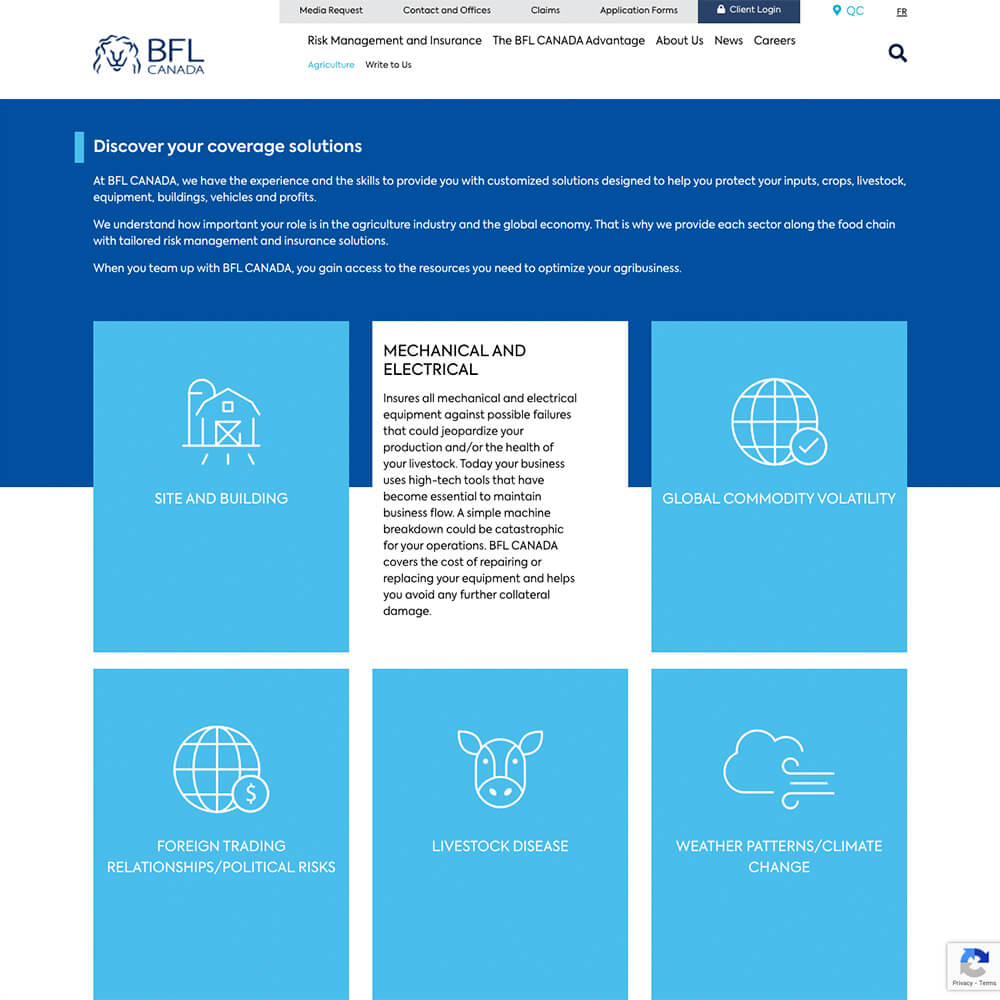Content is king in the insurance world
Studies show that content marketing performs 40% better than any other marketing tactic when it comes to getting quality leads. The reason? It has the power to answer questions.
BFL Canada’s website has more than 30 home pages. In fact, it’s made up of as many landing pages as there are business sectors or insurance services offered by the company.
With accurate content, it increases the chances of reaching a prospective client and makes the site more relevant for search engines.


SEO is priceless. A prospective client who lands on your site via an organic search is more likely to convert than one funnelled by media placement. The reason: the client is looking.
The strategy is based on identified issues, or the information needed for each stage of the customer journey, while avoiding keyword performance traps such as industry jargon only experts understand.

The Web activates content. Visual and interactive formats help to display complex content such as insurance. Make good use of it:
- Use lists
- Icons
- Interactive content
- Rich media (like videos)
- Display information gradually
Another way to add a dose of relevance to your content is to adapt it based on a user’s region.
- Use local language
- Adapt references to the economic, social and legal situations of the region
- Confirm geographical presence
- Localize SEO

The Web has the ability to measure itself. Analysis tools for traffic and browsing behaviour provide performance indicators that reveal the strong points and weaknesses of a content strategy. Measuring, assessing and adjusting should be done on a regular basis.
MEASURING CONTENT PERFORMANCE
The bounce rate on a home page or content pages doesn’t provide a complete picture of the performance data. Take the time to cross-reference indicators that give you a better picture:
- Create content groupings and compare them
- Estimate the number of unique sessions, combined with the time spent on the page



